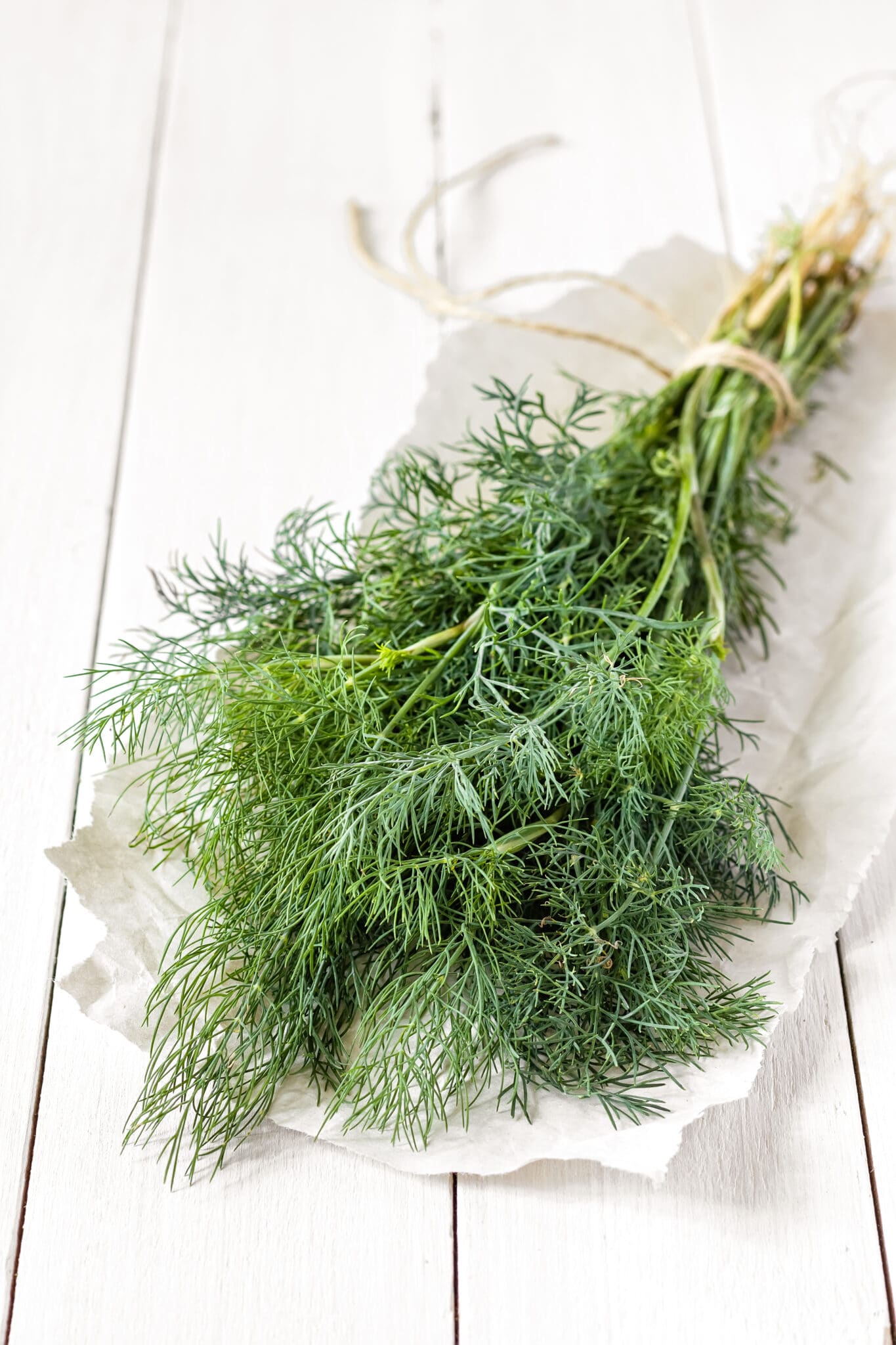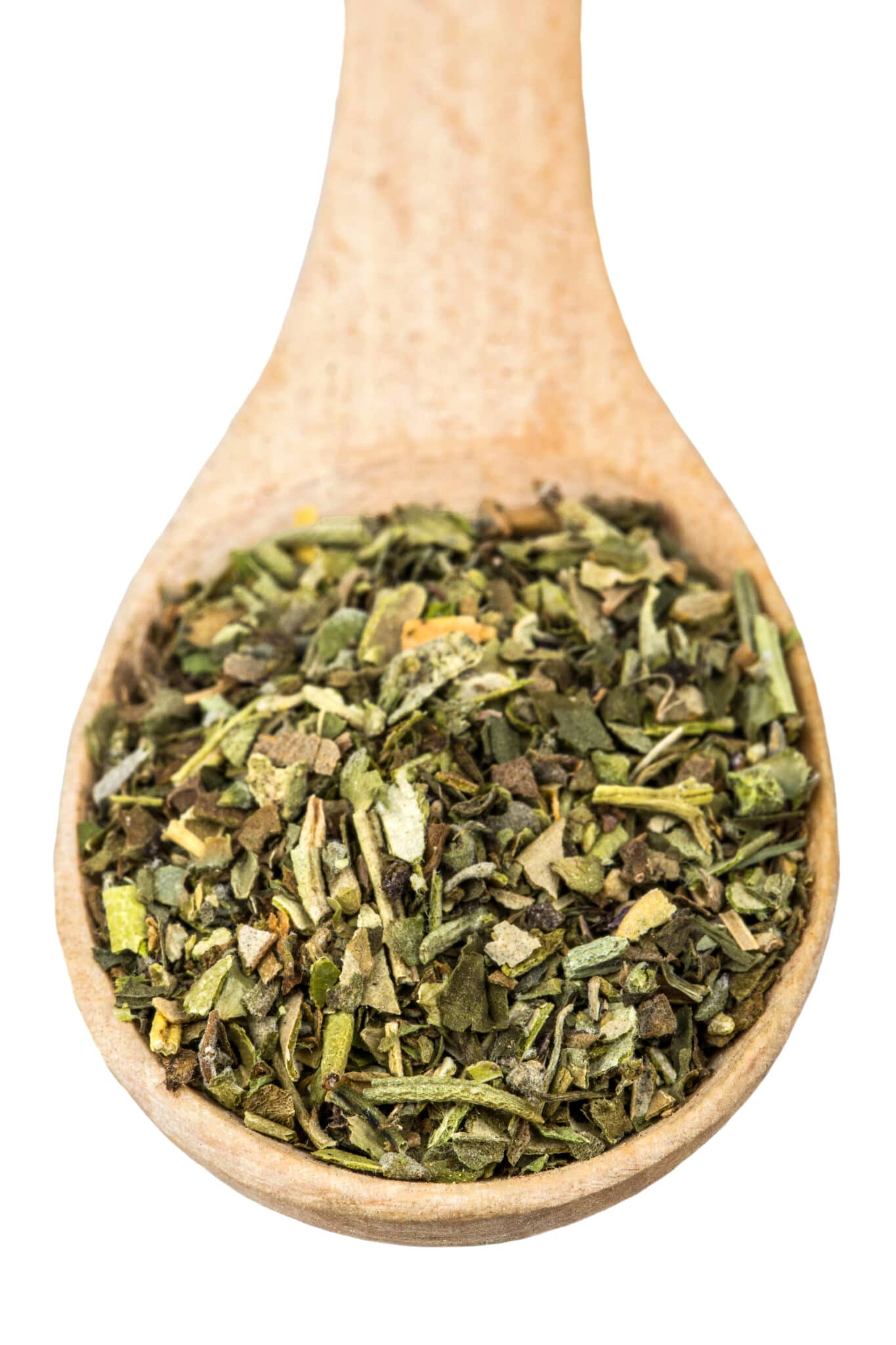How To Preserve Herbs: Methods, Tips, + Tricks
When the growing season ends, you can still use your garden’s bounty in all your cooking! Learn how to preserve fresh herbs from your garden with these simple and easy preservation methods.

Ah, fresh herbs. I love the way they take my simple recipes from good to splendid!
I love my herb garden and look forward to harvesting fresh, flavorful herbs yearly to use in my recipes. My favorites are basil for pizza and pesto, oregano and thyme for pasta, and rosemary for anything Mediterranean.
Unfortunately, very few herbs grow as evergreens – especially in colder climates like mine. So, unless you have an indoor herb garden, you’ll need to harvest your fresh garden herbs and preserve them to continue using them through the winter.
How To Preserve Fresh Herbs For Winter Use
Two basic ways of preserving fresh herbs from your garden are drying them or freezing them. Try one of these methods when you want to enjoy that fresh-from-the-garden flavor in your recipes all year long.
Tip: For the best flavor, harvest your herbs in the morning before the sun hits them but after the dew has dried.

How To Preserve Herbs By Drying Them
If all you’ve ever seen regarding preserved herbs was the spice aisle in the grocery store, you may think that drying is the best method. I don’t know if it’s the best necessarily, but it certainly is easier.
Best Herbs To Dry
This method doesn’t work well for every single herb. I recommend drying these herbs:

Air Dry Method
This is the easiest drying method, but it takes a little space and patience. Here’s how to air-dry your herbs:
- Remove any dirt by shaking the leaves and removing any old leaves.
- Gather stems into small bunches and secure them with some twine. I like to cover the top of the bundle (so the stems stick out) with a paper bag to ensure that the bunches are in direct sunlight and don’t get dusty. I recommend punching a couple of holes in the bag to allow air to circulate.
- Hang the bunches upside down in a well-ventilated place for 1-4 weeks. You’ll know they’re ready when the leaves easily crumble.

In The Microwave
Some herbs such as basil and parsley, can dry well in the microwave (which is much faster than air drying!). Here’s how:
- Spread your leaves on a paper towel and cover them with another paper towel.
- Microwave for 2-3 minutes at 1,000 watts or less, checking and rotating your herbs every 30 seconds.
- They will likely dry at different rates, so remove any dry or brittle leaves each time you check them. If you don’t, they can dry too quickly and even start to smoke.
In The Oven
Low and slow is the goal here. For this method, you want to remove leaves from the stems and spread them out on a shallow baking pan in a single layer. Dry for 3-4 hours at 110-120 degrees.
Use a Dehydrator
A dehydrator is a perfect tool for drying herbs. You will want to add full leaves and/or leaves on stems (like with thyme or Rosemary) and dehydrate them on low for 6 hours.
How To Store Dried Herbs
Once you have dried your herbs, it’s time to store them!
You could crumble them up and store them in airtight glass jars with well-fitting lids. Make sure you label them with the herb’s name and the date you added them to the jar! Store the jars away from heat and light.
A fantastic alternative is to use the Herb Preserve jars. I love these jars because they block out harmful ultraviolet rays and help the herbs stay fresh and flavorful longer.
When using dried herbs, use 1 tsp of dried crumbled leaves for each tablespoon of fresh herbs.

How To Preserve Herbs By Freezing
Freezing is a great option for many herbs, and I like it more than drying because the flavor is stronger and better than with dried herbs.
Best Herbs For Freezing
This method works well with:
Freeze Whole Leaves
With larger-leaf herbs such as basil, you can freeze whole leaves. All you need to do is take the leaves off the stems and spread them out on a shallow sheet pan. Place the sheet pan in the freezer until the leaves are frozen.
Then, transfer the frozen leaves to an air-tight, freezer-safe bag or container. Simply pull out as many leaves as you need and toss them into your recipes (or chop them first, if desired).
Note: The leaves will wilt after they thaw, so you won’t be able to use herbs preserved by freezing as garnish.

In Ice Cube Trays
One of the most common ways to freeze and preserve herbs is to chop them up and freeze them in ice cube trays so you can easily toss them into recipes later. Here’s how:
- Chop up your leaves.
- Measure out the amount you use the most (ex: ½ tsp or 1 tsp) and add that amount to each ice cube tray. Fill the tray the rest of the way with water, stock, or olive oil and freeze.
- Once frozen, take them out of the ice cube tray and put them into freezer bags.
- Take out as many cubes as you need for your recipe and toss them right into the food as it’s cooking.
Tip: If you like cooking with spice blends, create them in the ice cube tray before covering them with liquid and freezing them.
If you’ve ever lamented over losing your fresh herb garden to winter chills, I hope this post helps you realize that you can continue to enjoy your fresh herbs all year long!
By learning to preserve herbs using either (or both) of these methods, your recipes will still benefit from that fresh-from-the-garden flavor!

More Preserving inspiration
- Have Too Much, Basil? Here’s What To Do With Extra Basil!
- Types Of Mints: How To Grow And Use Popular Mint Varieties
- Types Of Basil: How To Grow And Use Popular Basil Varieties
- How To Grow Lavender In Pots Successfully!
- How to Dry Flowers – We Tested 5 Different Methods to Find the Best!
- How to Freeze Green Beans To Preserve Texture and Flavor!
- Canning Tomatoes Whole – The Quick and Easy Cold Pack Method
- How to Dehydrate Jalapeno Peppers Easily At Home
- How To Pickle Jalapenos To Last You All Winter




